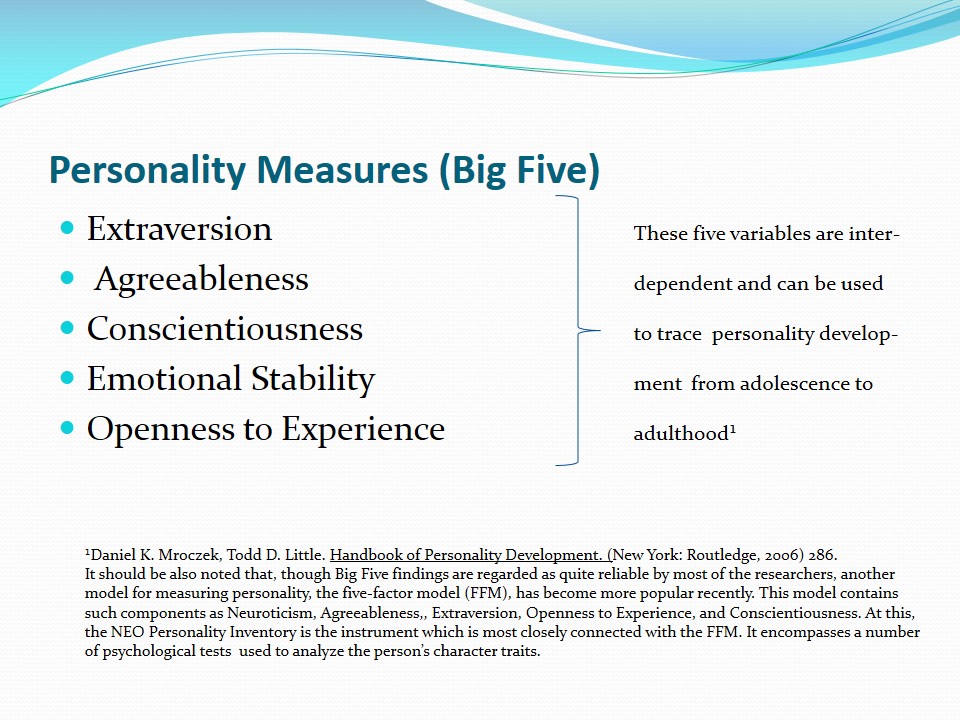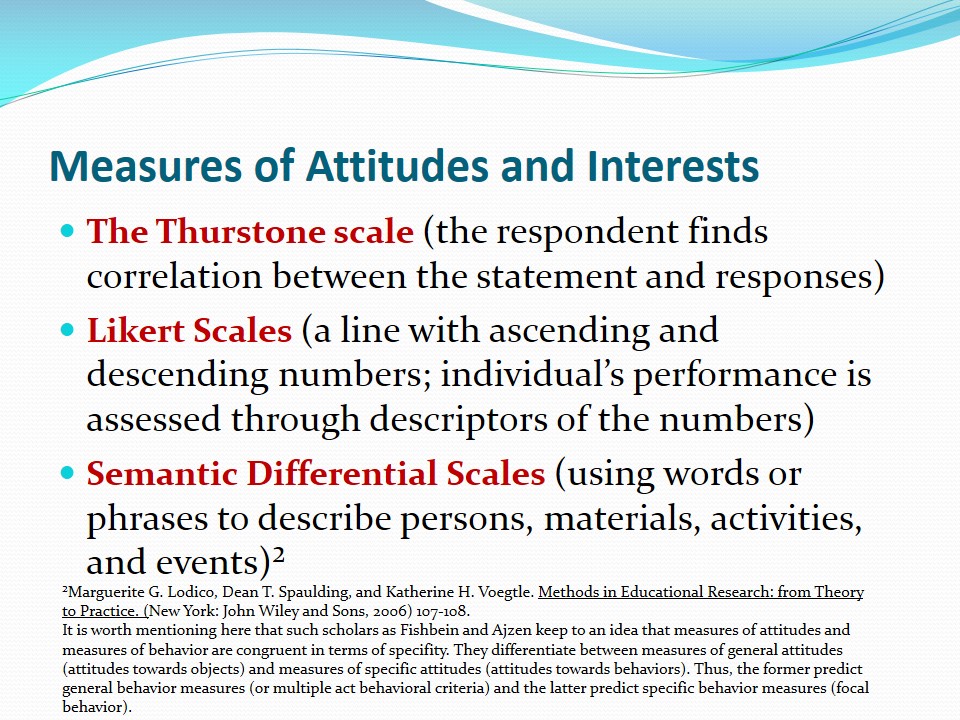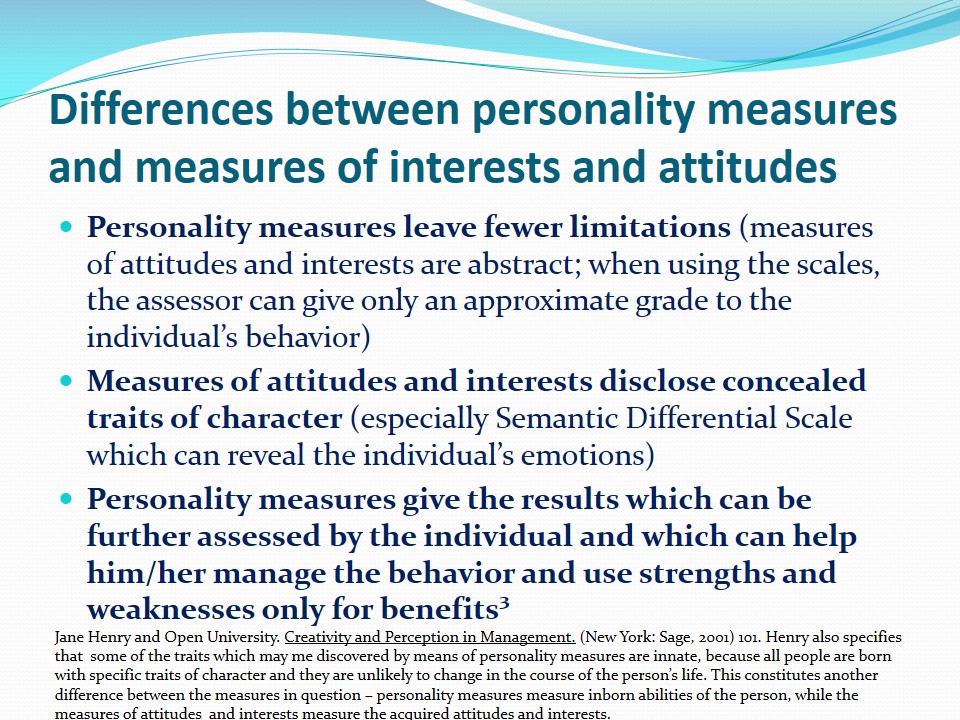Personality Measures (Big Five)
- Extraversion.
- Agreeableness.
- Conscientiousness.
- Emotional Stability.
- Openness to Experience.
These five variables are inter-dependent and can be used to trace personality develop-ment from adolescence to adulthood¹.

Measures of Attitudes and Interests
- The Thurstone scale (the respondent finds correlation between the statement and responses).
- Likert Scales (a line with ascending and descending numbers; individual’s performance is assessed through descriptors of the numbers).
- Semantic Differential Scales (using words or phrases to describe persons, materials, activities, and events)².

Differences between personality measures and measures of interests and attitudes
- Personality measures leave fewer limitations (measures of attitudes and interests are abstract; when using the scales, the assessor can give only an approximate grade to the individual’s behavior).
- Measures of attitudes and interests disclose concealed traits of character (especially Semantic Differential Scale which can reveal the individual’s emotions).
- Personality measures give the results which can be further assessed by the individual and which can help him/her manage the behavior and use strengths and weaknesses only for benefits³

- ¹Daniel K. Mroczek, Todd D. Little. Handbook of Personality Development. (New York: Routledge, 2006) 286.
- It should be also noted that, though Big Five findings are regarded as quite reliable by most of the researchers, another model for measuring personality, the five-factor model (FFM), has become more popular recently. This model contains such components as Neuroticism, Agreeableness,, Extraversion, Openness to Experience, and Conscientiousness. At this, the NEO Personality Inventory is the instrument which is most closely connected with the FFM. It encompasses a number of psychological tests used to analyze the person’s character traits.
- ²Marguerite G. Lodico, Dean T. Spaulding, and Katherine H. Voegtle. Methods in Educational Research: from Theory to Practice. (New York: John Wiley and Sons, 2006) 107-108.
- It is worth mentioning here that such scholars as Fishbein and Ajzen keep to an idea that measures of attitudes and measures of behavior are congruent in terms of specifity. They differentiate between measures of general attitudes (attitudes towards objects) and measures of specific attitudes (attitudes towards behaviors). Thus, the former predict general behavior measures (or multiple act behavioral criteria) and the latter predict specific behavior measures (focal behavior).
- 3Jane Henry and Open University. Creativity and Perception in Management. (New York: Sage, 2001) 101. Henry also specifies that some of the traits which may me discovered by means of personality measures are innate, because all people are born with specific traits of character and they are unlikely to change in the course of the person’s life. This constitutes another difference between the measures in question – personality measures measure inborn abilities of the person, while the measures of attitudes and interests measure the acquired attitudes and interests.